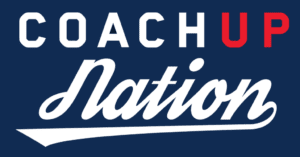MLS needs to embrace data analytics, but they can’t afford it
For decades, the nature of strategy and tactics relied mostly on perception, superstition, and a gut-feeling of potential promise. While these methods of destruction were feasible for the passionate fans or stubborn managers, it oftentimes lead to less favorable results. Thankfully, modern sports continue to evolve, largely through the use of data analytics to prepare or adjust like never before. Why guess at a winning strategy when the analytics could tell you, with almost absolute certainty, what the best path to victory may be? Well, in Major League Soccer, it may be because they can’t afford it, according to Vocativ’s Joe Lemire.
While the MLS has developed quickly over the past few years, all in skill, quality, and competitiveness, it’s not only still behind the other major sports in the United States, but also many of the world’s largest soccer leagues as well. One of the few success stories come from the University of Virginia and Olivier Gage, a former member of Sheffield Wednesday’s analytics department. Adding Gage to the staff helped the university’s program in a staggering quick fashion:
“From Gage’s work, Virginia was able to adopt playing principles like emphasizing shot quality from premium locations, limiting crossing passes in favor of playing through-balls, and promoting quick ball movement.”
Unfortunately, Gage, as of very recently, was a rare breed in the American soccer hierarchy, professional or otherwise, and the rest of the country is still scrambling to catch up. After a few successful years with Virginia, Gage made a permanent move to the Houston Dynamo, but, even with the proven results, the issue of expensive equipment and manpower has made it a tough price to swallow for other clubs. From Lemire:
“D.C. United hired Stewart Mairs to run its new data department, which could have an outsize impact given the club’s limited payroll budget. Mairs, who previously was Prozone’s head of U.S. operations, noted that some of the tracking systems integral to analytics can cost $50,000 or more for a season. “If you think about it, that’s three-quarters of a player in MLS,” he said. “[Usage of analytics is] nowhere near as advanced as other countries,” Mairs said. “It’s strange because of the thirst for statistics and the thirst for numbers in the U.S. that it isn’t [bigger], but I don’t think it’s really necessarily valued as yet.”
Much of the sporting world agrees that analytics is the next major step forward, but the MLS is now in a precarious position. As the league grows at a never-seen-before pace, both in product and team spirit, they cannot truly evolve until data analytics become more commonplace. In fact, once the United States can start preparing at the same level that the world’s best teams do, then, finally, soccer will truly be in business. “On the flip side of that, there is less I can do in MLS because of my budget,” Gage said. “It’s just not there right now. It will be, in five, 10 years.” Personally, I can’t wait.
(To read the rest of Lemire’s fantastic piece, click the link below.)
Joe Lemire — Data Works, But Major League Soccer Can’t Pay For It
How useful was this post?
Click on a star to rate it!
Average rating 0 / 5. Vote count: 0
No votes so far! Be the first to rate this post.




